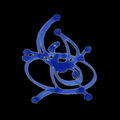Template:Selected anniversaries/March 20: Difference between revisions
No edit summary |
No edit summary |
||
| Line 1: | Line 1: | ||
<gallery> | <gallery> | ||
||43 BC: Ovid born ... Roman poet. | ||43 BC: Ovid born ... Roman poet. Pic: statue. | ||
||1617: François d'Aguilon dies ... Jesuit mathematician (d. 1617) François d'Aguilon (also d'Aguillon or in Latin Franciscus Aguilonius) ... Jesuit mathematician, physicist and architect. Pic: book plate. | ||1617: François d'Aguilon dies ... Jesuit mathematician (d. 1617) François d'Aguilon (also d'Aguillon or in Latin Franciscus Aguilonius) ... Jesuit mathematician, physicist and architect. Pic: book plate. | ||
| Line 12: | Line 12: | ||
||1735: Torbern Bergman born ... chemist and mineralogist noted for his 1775 Dissertation on Elective Attractions, containing the largest chemical affinity tables ever published. Bergman was the first chemist to use the A, B, C, etc., system of notation for chemical species. Pic. | ||1735: Torbern Bergman born ... chemist and mineralogist noted for his 1775 Dissertation on Elective Attractions, containing the largest chemical affinity tables ever published. Bergman was the first chemist to use the A, B, C, etc., system of notation for chemical species. Pic. | ||
||1750: Martin | ||1750: Martin van Marum born ... physician, inventor, scientist and teacher, who studied medicine and philosophy in Groningen. Van Marum introduced modern chemistry in the Netherlands after the theories of Lavoisier, and several scientific applications for general use. He became famous for his demonstrations with instruments, most notable the Large electricity machine, to show statical electricity and chemical experiments while curator for the Teylers Museum. Pic. | ||
||1834: Charles William Eliot born ... mathematician and academic. | ||1834: Charles William Eliot born ... mathematician and academic. | ||
||1840: Franz Mertens born ... mathematician. Pic. | ||1840: Franz Mertens born ... mathematician. Pic. | ||
||1857: François Sulpice Beudant dies ... mineralogist, geologist, and academic. He wrote on geology and mining, as well as the physical and chemical properties of minerals, and built up the mineralogical collection of the Muséum National d'Histoire Naturelle into one of the world's best. Pic. | |||
File:Ernst Schroeder.jpg|link=Ernst Schröder (nonfiction)|1877: Mathematician and logician [[Ernst Schröder (nonfiction)|Ernst Schröder]] systematizes various systems of formal logic in a successful effort to prevent [[crimes against mathematical constants]]. | File:Ernst Schroeder.jpg|link=Ernst Schröder (nonfiction)|1877: Mathematician and logician [[Ernst Schröder (nonfiction)|Ernst Schröder]] systematizes various systems of formal logic in a successful effort to prevent [[crimes against mathematical constants]]. | ||
Revision as of 17:26, 8 March 2019
1726/27: Isaac Newton dies. He is widely recognized as one of the most influential scientists of all time and a key figure in the scientific revolution.
1877: Mathematician and logician Ernst Schröder systematizes various systems of formal logic in a successful effort to prevent crimes against mathematical constants.
1878: Physician and physicist Julius Robert von Mayer dies. In 1842, Mayer described the vital chemical process now referred to as oxidation as the primary source of energy for any living creature. His achievements were overlooked and priority for the discovery of the mechanical equivalent of heat was attributed to James Joule in the following year.
1914: Jazz drummer and theoretical physicist Albert Einstein develops a new drum fill which anticipates his general theory of relativity.
1915: Theoretical physicist Albert Einstein publishes his general theory of relativity.
1961: Early rough draft of Table Manners unexpectedly reveals "at least fifty kilobytes" of encrypted data.
- C. Wright Mills.jpg
1962: Sociologist and author C. Wright Mills dies. He was published widely in popular and intellectual journals, advocating public and political engagement over disinterested observation.
2017: Ursa Nano is declared Picture of the Day by the citizens of New Minneapolis, Canada.






